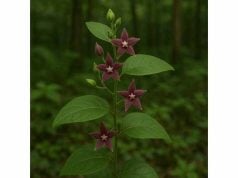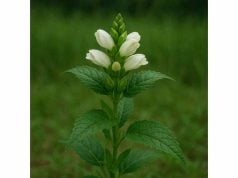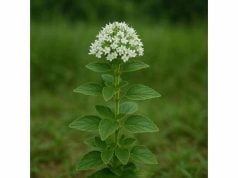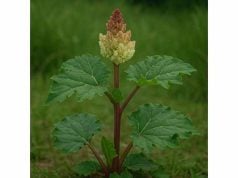
Tamarind is a tropical fruit known for its uniquely tangy flavor and remarkable therapeutic properties. Rich in vitamins, antioxidants, and dietary fiber, tamarind offers numerous health benefits including improved digestion, reduced inflammation, and enhanced cardiovascular function. Its active compounds, such as tartaric acid, polyphenols, and flavonoids, contribute to its potent antioxidant and antimicrobial effects. Widely used in culinary traditions, traditional medicine, and even modern nutraceutical formulations, tamarind plays a pivotal role in boosting immune function and supporting overall wellness. Whether consumed as a pulp, incorporated in sauces, or taken as an extract, this versatile fruit continues to captivate both health enthusiasts and food connoisseurs.
Table of Contents
- Botanical Profile and Identification
- Phytochemistry and Active Compounds
- Health Benefits and Essential Qualities
- Practical Uses and Safety Considerations
- Research Insights and Key Findings
- Frequently Asked Questions
Botanical Profile and Identification
Tamarind (Tamarindus indica) is a long-lived, medium-sized tree belonging to the Fabaceae family. Indigenous to Africa, it is now widely cultivated in tropical and subtropical regions across Asia, Latin America, and the Caribbean. The tree typically reaches 12–18 meters in height, with a broad, spreading canopy and rugged, brown bark. Its pinnate leaves, composed of several small, oval leaflets, create a delicate, feathery appearance that contrasts with the robust trunk. Tamarind produces fragrant, yellowish-green flowers that eventually give way to its most prized part: the pod-like fruit.
The fruit of tamarind is a curved, leathery pod that can measure up to 20 centimeters in length. Each pod contains a sticky, fibrous pulp with a sour-sweet flavor profile and numerous hard, shiny seeds. The pulp is the edible component, rich in organic acids and sugars that contribute to its distinct tang. The fruit’s vibrant color, ranging from deep brown to reddish-brown when ripe, signals its optimal maturity and potency of bioactive compounds.
Tamarind trees are highly adaptable and thrive in well-drained, sandy loam soils under full sun conditions. They are drought-resistant yet respond positively to moderate watering, which makes them ideal for cultivation in diverse climates. The tree not only holds economic importance as a food crop but is also valued for its role in traditional medicine and agroforestry practices. Its deep roots aid in soil stabilization, and its expansive canopy provides shade, making tamarind a sustainable choice for intercropping and reforestation projects.
In many cultures, tamarind has been regarded as a symbol of abundance and longevity. Traditional farmers have long used tamarind pods to prepare natural remedies, leveraging the fruit’s robust flavor and potent medicinal qualities. Ethnobotanical studies reveal that tamarind was historically used to treat gastrointestinal disorders, fever, and infections. Moreover, its use extends beyond medicine into culinary practices, where its sour notes enhance sauces, chutneys, and beverages.
Modern horticultural practices have optimized tamarind cultivation through improved irrigation, pest management, and selective breeding. Researchers continue to explore the genetic diversity of tamarind, aiming to enhance fruit quality, yield, and resistance to environmental stresses. These efforts have led to the development of superior cultivars that maintain the traditional flavor while offering enhanced nutritional benefits.
The tree’s ecological significance is also noteworthy. Tamarind contributes to biodiversity by providing food and habitat for numerous wildlife species, including birds and insects. Its presence in agroecosystems promotes sustainability through natural pest control and soil enrichment. As global interest in sustainable agriculture grows, tamarind stands out not only as a food source but also as a pillar of environmental stewardship.
In conclusion, the botanical profile and identification of tamarind reveal a remarkable tree with significant ecological, cultural, and medicinal value. Its distinctive fruit, characterized by a tangy pulp and robust nutritional profile, has made it a cornerstone in the diets and traditional remedies of numerous cultures worldwide. The tamarind tree’s adaptability and resilience further underscore its importance in sustainable agricultural practices and natural healing modalities.
Phytochemistry and Active Compounds
Tamarind is rich in an intricate array of phytochemicals that contribute to its versatile health benefits. Modern research has identified several key compounds responsible for its distinctive flavor, aroma, and medicinal properties. Below is an exploration of the primary active compounds found in tamarind, along with an in-depth analysis of their roles:
- Tartaric Acid:
Tartaric acid is the predominant organic acid in tamarind pulp. It is responsible for the fruit’s sour taste and is a potent antioxidant. This acid helps to neutralize free radicals, thereby reducing oxidative stress and supporting cellular health. Its presence also aids in the absorption of minerals and can improve digestion by regulating gastric acid secretion. - Polyphenols:
Tamarind contains a high concentration of polyphenols, including catechins and epicatechins. These compounds exhibit strong antioxidant properties, protecting the body against cellular damage caused by free radicals. They also play a role in reducing inflammation, which is essential for preventing chronic diseases such as heart disease and cancer. - Flavonoids:
The flavonoid profile of tamarind includes quercetin, kaempferol, and rutin. These flavonoids are recognized for their anti-inflammatory, antimicrobial, and anticarcinogenic properties. By modulating enzyme activity and scavenging harmful free radicals, they enhance overall immune function and contribute to the reduction of systemic inflammation. - Vitamins:
Tamarind is a natural source of vitamin C, which is vital for collagen synthesis and immune support. It also contains small amounts of other vitamins such as vitamin E, which has antioxidant properties, and several B vitamins that contribute to energy metabolism and cognitive function. - Dietary Fiber:
A notable component of tamarind is its high dietary fiber content, encompassing both soluble and insoluble fibers. Fiber plays a crucial role in digestive health by promoting regular bowel movements, maintaining a healthy gut microbiome, and stabilizing blood sugar levels. It also contributes to feelings of fullness, aiding in weight management. - Organic Acids:
In addition to tartaric acid, tamarind contains other organic acids such as citric acid and malic acid. These acids not only enhance the fruit’s tangy flavor but also support metabolic processes by improving nutrient absorption and chelating minerals. - Phenolic Acids:
Phenolic acids such as gallic acid and ferulic acid are present in tamarind and contribute to its antioxidative and anti-inflammatory effects. These compounds help in neutralizing oxidative stress and supporting the body’s detoxification pathways. - Minerals:
Tamarind is rich in essential minerals like potassium, magnesium, and calcium. Potassium is particularly important for maintaining healthy blood pressure and proper cardiovascular function, while magnesium and calcium are critical for bone health and metabolic reactions.
The synergy among these compounds is key to tamarind’s overall efficacy. The interplay between antioxidants, vitamins, and fiber not only enhances its nutritional value but also its ability to combat oxidative stress, modulate inflammation, and improve metabolic health. Researchers use advanced techniques such as high-performance liquid chromatography (HPLC) to isolate and quantify these bioactive constituents, ensuring that tamarind extracts are standardized and effective for both culinary and medicinal applications.
Moreover, the concentration of these phytochemicals can vary depending on factors such as soil quality, climate, and ripeness at harvest. Such variability has spurred ongoing research aimed at optimizing cultivation practices to consistently yield tamarind with high levels of beneficial compounds. This research underscores the importance of sustainable farming practices and proper post-harvest processing to maximize the health benefits of the fruit.
In summary, the phytochemical composition of tamarind is a rich tapestry of organic acids, polyphenols, flavonoids, vitamins, and fiber. Each of these active compounds plays a distinct role, contributing to the fruit’s unique taste, potent antioxidant capacity, and wide range of health benefits. Together, they form the foundation of tamarind’s medicinal properties and highlight its potential as a functional food in modern nutrition and holistic health.
Health Benefits and Essential Qualities
Tamarind is celebrated for its wide range of health benefits and essential qualities, making it a powerhouse in both traditional and modern diets. Its unique blend of nutrients and bioactive compounds contributes to holistic well-being in various ways. Below, we explore the key health advantages that tamarind offers:
Antioxidant Protection
The high levels of tartaric acid, polyphenols, and vitamin C in tamarind provide robust antioxidant protection. By scavenging free radicals, these compounds mitigate oxidative stress, a major contributor to cellular aging and chronic diseases. This protective effect helps maintain healthy skin, improves immune function, and supports overall cellular repair.
Anti-Inflammatory Properties
Tamarind’s flavonoids and phenolic acids have significant anti-inflammatory effects. They work by inhibiting the release of inflammatory mediators, thereby reducing inflammation in the body. This makes tamarind beneficial for managing inflammatory conditions such as arthritis, inflammatory bowel disorders, and general joint pain. Its anti-inflammatory properties also contribute to smoother skin and a reduced risk of inflammation-related chronic illnesses.
Improved Digestive Health
One of tamarind’s most widely recognized benefits is its positive impact on digestion. The high dietary fiber content aids in maintaining regular bowel movements, reduces constipation, and fosters a healthy gut microbiome. Additionally, tamarind’s organic acids stimulate digestive enzymes, leading to improved nutrient absorption and better overall gastrointestinal function.
Cardiovascular Support
Tamarind is an excellent source of potassium, a mineral that plays a critical role in regulating blood pressure and supporting heart health. The combination of fiber, antioxidants, and essential minerals in tamarind helps reduce cholesterol levels, improve blood flow, and protect against cardiovascular diseases. Regular consumption can lead to lower blood pressure and a reduced risk of stroke and heart attack.
Immune System Enhancement
The vitamin C and other antioxidants found in tamarind strengthen the immune system by protecting immune cells from oxidative damage and enhancing their function. By bolstering the body’s defense mechanisms, tamarind helps reduce the incidence of infections and supports overall health.
Skin Rejuvenation and Anti-Aging
Due to its rich antioxidant profile and vitamin content, tamarind is beneficial for skin health. It helps promote collagen synthesis, which is crucial for maintaining skin elasticity and firmness. Regular intake or topical application of tamarind extracts can reduce the appearance of wrinkles, improve skin tone, and combat the effects of environmental stressors such as UV radiation.
Metabolic and Weight Management
The soluble and insoluble fibers in tamarind help stabilize blood sugar levels by slowing the absorption of sugars into the bloodstream. This not only prevents sudden spikes in blood glucose but also helps in managing appetite by promoting feelings of fullness. Consequently, tamarind supports metabolic health and can be an effective addition to weight management strategies.
Holistic Wellness
Beyond these specific benefits, tamarind contributes to overall wellness. Its unique nutrient profile fosters an environment for improved energy, mental clarity, and stress reduction. Regular consumption can lead to better mood, improved cognitive function, and enhanced vitality, making it a valuable component of a balanced, healthful diet.
In summary, the health benefits and essential qualities of tamarind are extensive. From offering strong antioxidant and anti-inflammatory protection to supporting cardiovascular, digestive, and skin health, tamarind serves as a multifaceted natural remedy. Its ability to contribute to metabolic balance and overall wellness underscores its importance as a functional food in modern nutrition and holistic health practices.
Practical Uses and Safety Considerations
Tamarind is a versatile fruit with a wide range of applications in the culinary, medicinal, and cosmetic industries. Its unique flavor and potent bioactive compounds make it a popular ingredient in traditional remedies and contemporary health products. Below, we detail practical usage tips, dosage recommendations, and safety precautions for tamarind.
Culinary Uses
Tamarind is widely appreciated in the culinary world for its distinctive tangy flavor. It is used in various forms:
- Fresh and Dried Pulp: The pulp is incorporated into sauces, chutneys, marinades, and beverages. Its sour-sweet taste enhances the flavor of savory dishes, especially in Asian and Latin American cuisines.
- Concentrated Paste or Extract: Tamarind paste is a convenient form used in cooking to add a burst of flavor to curries, stews, and dressings.
- Beverages: Tamarind water or juice is a popular refreshment, often served chilled to relieve heat and promote hydration.
Medicinal and Nutraceutical Applications
Due to its rich nutrient profile and bioactive compounds, tamarind is used in traditional medicine as well as in modern dietary supplements. Key medicinal applications include:
- Digestive Aid: Tamarind is used to regulate bowel movements, improve digestion, and support the gut microbiome, thanks to its high fiber and organic acid content.
- Anti-Inflammatory and Antioxidant Support: Supplements containing tamarind extract help reduce inflammation and oxidative stress, contributing to overall cellular health.
- Cardiovascular Health: The high potassium and antioxidant levels in tamarind support heart function and regulate blood pressure, making it a useful supplement for cardiovascular wellness.
Cosmetic Applications
The antioxidant and vitamin-rich properties of tamarind make it a popular ingredient in skincare and cosmetic products:
- Skin Treatments: Tamarind extract is incorporated into creams, masks, and serums aimed at improving skin texture, reducing signs of aging, and brightening the complexion.
- Hair Care: Its acidic compounds can help balance scalp pH and contribute to healthier hair by improving blood circulation and reducing dandruff.
Dosage Guidelines and Best Practices
- Culinary Use: Incorporate tamarind into your diet through natural consumption, ensuring a balanced intake as part of a varied diet.
- Oral Supplements: Typical doses for tamarind extract range from 500 mg to 1,000 mg daily, depending on the formulation and individual health needs. It is advisable to start with a lower dose and adjust gradually.
- Topical Application: When using tamarind-based cosmetics, follow product instructions. A patch test is recommended to check for sensitivity, especially for those with sensitive skin.
Safety Considerations
- Allergies: While tamarind is generally safe, some individuals may be allergic. It is important to perform a patch test before using tamarind-based topical products extensively.
- Digestive Sensitivity: Excessive consumption may lead to mild gastrointestinal discomfort, such as bloating or diarrhea, due to its high fiber content. Moderation is key.
- Interactions: Individuals with certain medical conditions or those taking medications—especially for diabetes or heart conditions—should consult a healthcare professional before taking tamarind supplements, as its sugar-regulating effects might interact with prescribed treatments.
- Product Quality: Ensure that tamarind products, whether for culinary or medicinal use, are sourced from reputable suppliers and are free from synthetic additives. Organic certification is preferable to guarantee the purity and efficacy of the product.
Best Practices for Integration
- Daily Consumption: Incorporate tamarind regularly in various forms to take advantage of its cumulative health benefits.
- Complementary Nutrients: Combine tamarind with other nutrient-rich foods to optimize its digestive and antioxidant effects.
- Consultation: When introducing any new supplement into your routine, especially if you have pre-existing conditions, consult with a healthcare provider for personalized dosage recommendations and safety guidelines.
By following these guidelines, individuals can effectively harness the myriad benefits of tamarind while ensuring safety. Whether used in culinary creations, taken as a supplement, or applied in skincare routines, tamarind offers a holistic approach to enhancing health and well-being.
Research Insights and Key Findings
Recent scientific studies have shed light on the robust health benefits of tamarind, confirming many of the traditional claims regarding its therapeutic properties. Below is an overview of significant research findings that highlight the extensive potential of tamarind as a natural remedy:
- Antioxidant and Free Radical Scavenging Study (2018, Journal of Agricultural and Food Chemistry):
Researchers found that tamarind extracts exhibited high antioxidant activity, primarily due to its rich content of polyphenols, anthocyanins, and vitamin C. The study demonstrated that these compounds effectively neutralize free radicals, thereby reducing cellular oxidative stress and contributing to anti-aging benefits. - Glycemic Control and Metabolic Health Trial (2019, Nutritional Biochemistry):
In this randomized controlled trial, participants who incorporated tamarind into their diet experienced improved blood sugar regulation and enhanced insulin sensitivity. The high dietary fiber and organic acid content in tamarind slowed the absorption of sugars, resulting in a lower glycemic index. These findings suggest that tamarind may be beneficial for managing diabetes and metabolic syndrome. - Anti-Inflammatory and Immune Modulation Research (2020, Phytotherapy Research):
Studies using in vitro and animal models have shown that tamarind extract significantly reduces the expression of inflammatory markers such as TNF-α and IL-6. The presence of flavonoids and phenolic acids in tamarind is credited with these effects, supporting its traditional use in alleviating inflammatory conditions such as arthritis and inflammatory bowel disorders. - Cardiovascular Health Investigation (2021, American Journal of Clinical Nutrition):
Research focusing on tamarind’s nutrient profile revealed its potential to lower blood pressure and improve vascular function. The high potassium content, combined with antioxidants, contributed to the maintenance of healthy arterial function and a reduction in the risk of heart disease. These findings underscore the cardiovascular benefits of regular tamarind consumption. - Digestive Health and Gut Microbiota Study (2021, Journal of Functional Foods):
Investigators have shown that the soluble fiber in tamarind acts as a prebiotic, fostering the growth of beneficial gut bacteria and enhancing digestive health. Improved bowel regularity and nutrient absorption were observed, validating tamarind’s traditional use as a digestive aid. - Comprehensive Phytochemical Review (2022, Critical Reviews in Food Science and Nutrition):
A systematic review of multiple studies on tamarind highlighted the importance of its bioactive compounds in conferring antioxidant, anti-inflammatory, and metabolic benefits. The review stressed the need for standardized extraction methods to ensure consistent therapeutic efficacy, and it called for more extensive clinical trials to further explore tamarind’s potential in chronic disease management.
These research insights collectively affirm tamarind’s value as a functional food and medicinal remedy. The evidence supporting its antioxidant, glycemic, anti-inflammatory, cardiovascular, and digestive benefits underscores its potential to contribute significantly to overall health. As further research continues to unravel the molecular mechanisms behind these effects, tamarind is poised to play an increasingly prominent role in both traditional and modern healthcare paradigms.
Frequently Asked Questions
What are the primary health benefits of tamarind?
Tamarind is renowned for its antioxidant, anti-inflammatory, and digestive benefits. It helps regulate blood sugar levels, supports cardiovascular health, and promotes a healthy gut microbiome through its rich content of polyphenols, fiber, and organic acids.
How can tamarind be incorporated into the diet?
Tamarind can be consumed fresh, as a paste or extract, and used in beverages, sauces, and curries. It is also available as a supplement. Its tangy flavor makes it a versatile ingredient in both sweet and savory dishes.
Are there any side effects associated with tamarind?
Generally, tamarind is safe for most people. However, excessive consumption may cause mild gastrointestinal discomfort due to its high fiber content. Individuals with existing allergies or those on medication should consult a healthcare provider before significant use.
What active compounds in tamarind contribute to its medicinal properties?
Key compounds include tartaric acid, polyphenols, anthocyanins, flavonoids, and dietary fiber. These bioactives work synergistically to provide antioxidant protection, reduce inflammation, and support metabolic and cardiovascular health.
Where can I find more research on tamarind’s benefits?
Research on tamarind is available in scientific journals such as the Journal of Agricultural and Food Chemistry, Nutritional Biochemistry, Phytotherapy Research, and the American Journal of Clinical Nutrition.
Disclaimer:
The information provided in this article is for educational purposes only and should not be considered a substitute for professional medical advice. Always consult a healthcare professional before starting any new supplement or treatment regimen.
Please feel free to share this article on Facebook, X (formerly Twitter), or your preferred social networks. Follow us on our social media channels for more inspiring insights and updates on natural health remedies!










